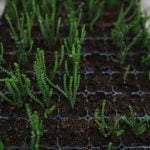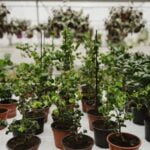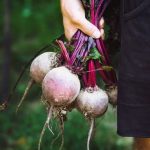Are you looking to bring some greenery and life into your limited outdoor space? Small area gardening ideas offer the perfect solution for maximizing the potential of small spaces, whether it’s a tiny balcony, patio, or even just a corner in your yard. In this article, we will explore the benefits of small area gardening and provide you with a variety of creative and practical ideas for making the most out of your compact garden space.
Small area gardening offers numerous advantages, from providing an opportunity to connect with nature in urban environments to creating a personalized oasis right at home. With the right plants and design techniques, you can transform even the smallest outdoor areas into lush and vibrant gardens that enhance your living space. Whether you’re an experienced gardener or just starting out, there are plenty of options for incorporating greenery and beauty into your surroundings through small area gardening.
Throughout this article, we will guide you through various aspects of small area gardening, from choosing the right plants for limited space to exploring creative container gardening ideas and maximizing vertical space for growing plants. We’ll also delve into small area garden design techniques and provide tips for successful vegetable and flower gardening in compact areas.
Whether you have a green thumb or are new to gardening, these small area gardening ideas will inspire you to embrace the beauty and potential of smaller garden spaces.
Choosing the Right Plants for Small Space Gardening
When it comes to small area gardening, choosing the right plants is crucial for maximizing the limited space and ensuring a successful garden. Opting for plants that are well-suited for small spaces can make a big difference in the overall look and feel of your garden.
One of the best options for small area gardening is to select compact or dwarf varieties of plants. These types of plants are specifically bred to thrive in smaller spaces, making them perfect for container gardening or vertical gardening. Some examples of compact plants include cherry tomatoes, mini bell peppers, dwarf sunflowers, and bush-type zucchini.
Additionally, herbs are excellent choices for small area gardening as they can often be grown in small pots or hanging planters. Herbs like basil, thyme, mint, and rosemary not only add flavor to your meals but also add beauty and fragrance to your garden.
Another important factor to consider when choosing plants for small area gardening is their growth habits. Opt for plants that are suitable for confined spaces and do not take over the entire garden bed or container. This will help prevent overcrowding and ensure that each plant has enough space to grow and thrive.
In summary, selecting the right plants is essential for successful small area gardening. Compact varieties, herbs, and plants with suitable growth habits are all great options for maximizing limited space while creating a beautiful and productive garden.
| Plants | Benefits |
|---|---|
| Compact Varieties | Perfect for small spaces |
| Herbs | Add flavor and fragrance |
| Suitable Growth Habits | Prevent overcrowding |
Creative Container Gardening Ideas for Limited Space
When it comes to small area gardening, one of the most versatile and practical solutions is container gardening. Whether you have a tiny balcony, a small patio, or just a few square feet of outdoor space, creative container gardening ideas can help you make the most of your limited area.
When choosing plants for container gardening in a small space, it’s important to consider the size of the container, as well as the mature size of the plants. Look for compact or dwarf varieties of vegetables, herbs, and flowers that are well-suited to container growing. Some great options for small area gardening include cherry tomatoes, peppers, lettuce, basil, and pansies.
For those with limited ground space, vertical container gardening is a game-changer. This technique involves using hanging baskets, wall-mounted planters, and trellises to grow plants vertically, taking advantage of unused wall space. Vertical gardening not only maximizes growing space but also adds visual interest and greenery to even the smallest of areas.
In addition to traditional pots and planters, don’t be afraid to get creative with your containers. Upcycled items like old crates, buckets, and even teacups can make charming homes for your plants in a small area garden.
Just be sure to provide adequate drainage for your unconventional containers to keep your plants healthy and thriving. By embracing innovative container gardening ideas and thinking outside the box when it comes to planters and vessels, you can create a lush and vibrant garden in even the tiniest of outdoor spaces.
Vertical Gardening
Utilizing Vertical Structures
One of the most effective ways to maximize space in a small area garden is by utilizing vertical structures for growing plants. This can include installing trellises, using wall-mounted planters, or creating hanging gardens. By taking advantage of vertical space, you can cultivate a variety of fruits, vegetables, and flowers without taking up valuable ground space.
Choosing the Right Plants for Vertical Gardens
When engaging in small area gardening ideas like vertical gardening, it is important to choose plants that are well-suited for this type of environment. Consider plants that have a trailing or vining growth habit, as they will thrive when grown vertically. Some popular options include tomatoes, cucumbers, strawberries, and various types of climbing flowers.
Maintaining Vertical Gardens
Just like any other type of garden, vertical gardens require proper maintenance to ensure healthy plant growth. This may involve regular watering, fertilizing, and pruning as needed. Additionally, it’s important to regularly check the structural integrity of the vertical supports to prevent damage or collapse. With the right care and attention, vertical gardens can flourish and provide abundant harvests within limited spaces.
By incorporating these vertical gardening techniques into your small area gardening ideas, you can make the most out of your available space and enjoy a thriving garden even in a limited area.
Utilizing Small Area Garden Design Techniques
The key to successful small area gardening lies in utilizing effective garden design techniques. By maximizing the use of space and being strategic with layout and organization, a beautiful and thriving garden can be achieved, even in the smallest of areas. Here are some ideas to consider when designing a small area garden:
- Utilize raised beds or planters: Raised beds or planters are a great way to maximize space and create defined growing areas within a small garden. They also help with soil drainage and can make gardening more accessible.
- Interplanting and companion planting: Interplanting different types of plants together can maximize space while also providing benefits such as pest control, nutrient sharing, and pollination.
- Use vertical features: Incorporating trellises, hanging planters, or wall-mounted containers can help take advantage of vertical space, allowing for more plants to be grown in a small area.
Another important aspect of small area garden design is to carefully plan the layout and organization of the garden. This includes considering sunlight exposure, access for watering and maintenance, as well as aesthetic appeal. Creating pathways or using stepping stones can also help ensure that every inch of the space is utilized effectively while allowing for ease of movement throughout the garden.
In addition, incorporating elements such as mirrors or reflective surfaces into the design can create an illusion of depth, making the small area appear larger than it actually is. Moreover, creating focal points with eye-catching features like colorful containers or unique plant varieties can draw attention away from the size limitations of the space. With thoughtful planning and creative design techniques, even the smallest areas can become stunning gardens full of life and beauty.
Tips for Successful Small Area Vegetable Gardening
When it comes to small area gardening, growing vegetables in limited space can be a rewarding and satisfying experience. With the right tips and techniques, you can effectively maximize your small garden area to produce a bountiful harvest of fresh and nutritious vegetables. Here are some tips for successful small area vegetable gardening.
First, it’s important to choose the right vegetables that are well-suited for small space gardening. Opt for compact or dwarf varieties that are specifically bred for container or small gardens. Examples of these include cherry tomatoes, bush beans, salad greens, and compact pepper plants. These varieties take up less space and are perfect for small area gardening.
Next, consider using vertical gardening techniques to make the most of the available space. Vertical gardening involves growing plants upwards instead of outwards, utilizing trellises, cages, or stakes to support climbing plants such as cucumbers, peas, and squash. This not only saves space but also provides better air circulation and makes harvesting easier.
In addition to choosing the right plants and utilizing vertical gardening methods, proper soil preparation and maintenance are crucial for successful small area vegetable gardening. Ensure that your garden soil is rich in nutrients by adding compost or organic matter regularly. Implementing mulching techniques can also help conserve moisture and reduce weed growth in your small vegetable garden. With these tips in mind, you can effectively grow a variety of vegetables even in the smallest of garden spaces.
Small Area Flower Garden Ideas
When it comes to small area gardening, adding a touch of color and beauty with flowers is essential. Even with limited space, there are plenty of creative ways to incorporate flower garden ideas that will enhance the aesthetic appeal of your outdoor space. From hanging baskets to window boxes, there are numerous options for creating a stunning floral display in small areas.
Choosing the Right Flowers
When planning a small area flower garden, it’s important to choose the right types of flowers that will thrive in your specific growing conditions. Consider factors such as sunlight exposure, soil type, and climate when selecting your blooms. Opt for compact varieties or those that are suitable for containers to maximize the use of limited space.
Container Gardening for Flowers
One of the most popular small area gardening ideas for flowers is utilizing containers. Whether it’s a balcony, patio, or windowsill, containers can add pops of color and visual interest. Choose various sizes and shapes of pots and planters to create a dynamic and visually appealing display. Hanging baskets can also be a great way to add vertical interest and free up ground space.
Vertical Flower Gardens
Incorporating vertical gardening techniques into small area flower gardens can be incredibly effective in maximizing space. Consider installing trellises, wall-mounted planters, or utilizing wall space for climbing flowers such as clematis or morning glories. Vertical elements not only add visual interest but also allow for more planting opportunities in small areas.
By implementing these small area flower garden ideas, you can transform even the tiniest outdoor spaces into vibrant and beautiful floral displays. Whether you have a balcony, patio, or rooftop garden, there are plenty of options for bringing beauty to limited spaces through creative and strategic flower gardening techniques.
Maintaining and Caring for Small Area Gardens
When it comes to maintaining and caring for small area gardens, there are several essential practices that can help ensure the success and longevity of your green space. Whether you are tending to a small area vegetable garden or a compact flower garden, following these tips can help you maximize the potential of your limited outdoor space.
First and foremost, regular watering is crucial for the health of your plants, especially in small area gardening where there may be limited soil to retain moisture. Consider investing in a soaker hose or drip irrigation system to ensure that your plants receive consistent moisture without wasteful runoff. Additionally, be sure to monitor the soil moisture levels regularly and adjust your watering schedule as needed based on weather conditions.
In addition to proper watering, regular fertilization is essential for small area gardens. Because these spaces often have limited soil volume, nutrients can become depleted more quickly than in larger gardens. Consider using a slow-release fertilizer or organic compost to provide a steady supply of nutrients to your plants. Be mindful not to over-fertilize, as this can cause damage to your plants rather than promoting healthy growth.
To further enhance the health and vitality of your small area garden, regular pruning and maintenance are key practices. By removing dead or damaged foliage, you can promote better air circulation and reduce the risk of disease in your plants. Additionally, staying on top of weeding will help prevent invasive species from taking over and competing with your desired plants for resources.
In summary, maintaining and caring for a small area garden requires attention to detail and consistent effort. By prioritizing proper watering, fertilization, and maintenance practices, you can ensure that your small space thrives with vibrant plant life. Whether you’re growing vegetables or flowers in a confined area, these essential practices will set you up for success in your small area gardening endeavors.
Conclusion
In conclusion, small area gardening offers numerous benefits and possibilities for those with limited space. Whether it’s a balcony, patio, or small backyard, there are endless opportunities to create a beautiful and thriving garden in a restricted area. By choosing the right plants, utilizing creative container gardening ideas, and implementing vertical gardening techniques, individuals can maximize their space and bring life to even the smallest of areas.
The key to successful small area gardening lies in careful planning, smart design choices, and diligent maintenance. It’s important to select plants that are well-suited for small spaces and consider their growth habits to ensure they thrive in a confined environment. Creative container gardening ideas such as vertical gardens or hanging planters can take advantage of unused vertical space and add visual interest to any small area.
Overall, embracing small area gardening ideas allows individuals to experience the joy of cultivating their own little piece of nature regardless of the size limitations. With the right knowledge, tools, and dedication, anyone can transform a small area into a vibrant and flourishing garden that brings beauty and tranquility to their surroundings.
So don’t let limited space deter you – instead, embrace the potential of small area gardening and create your own green oasis no matter how compact your living space may be.
Frequently Asked Questions
How Do You Layout a Small Garden?
When laying out a small garden, it’s important to carefully plan the placement of plants, pathways, and any decorative features. Consider using raised beds or vertical gardening to maximize space and create visual interest.
What Is Best for a Small Garden?
The best approach for a small garden is to focus on maximizing space and choosing plants that are well-suited for the size of the area. This might include compact or dwarf varieties, as well as utilizing vertical space with trellises or hanging planters.
How Do You Arrange Plants in a Small Garden?
When arranging plants in a small garden, consider the mature size of each plant and allow for sufficient spacing to prevent overcrowding as they grow. Group plants with similar water and sunlight needs together to make maintenance easier and create visual harmony in the garden.

Welcome to my gardening blog! I am passionate about plants and enjoy sharing my knowledge and experiences with others. In this blog, I will write about everything related to gardening, from tips on how to get started to updates on my own garden projects.





